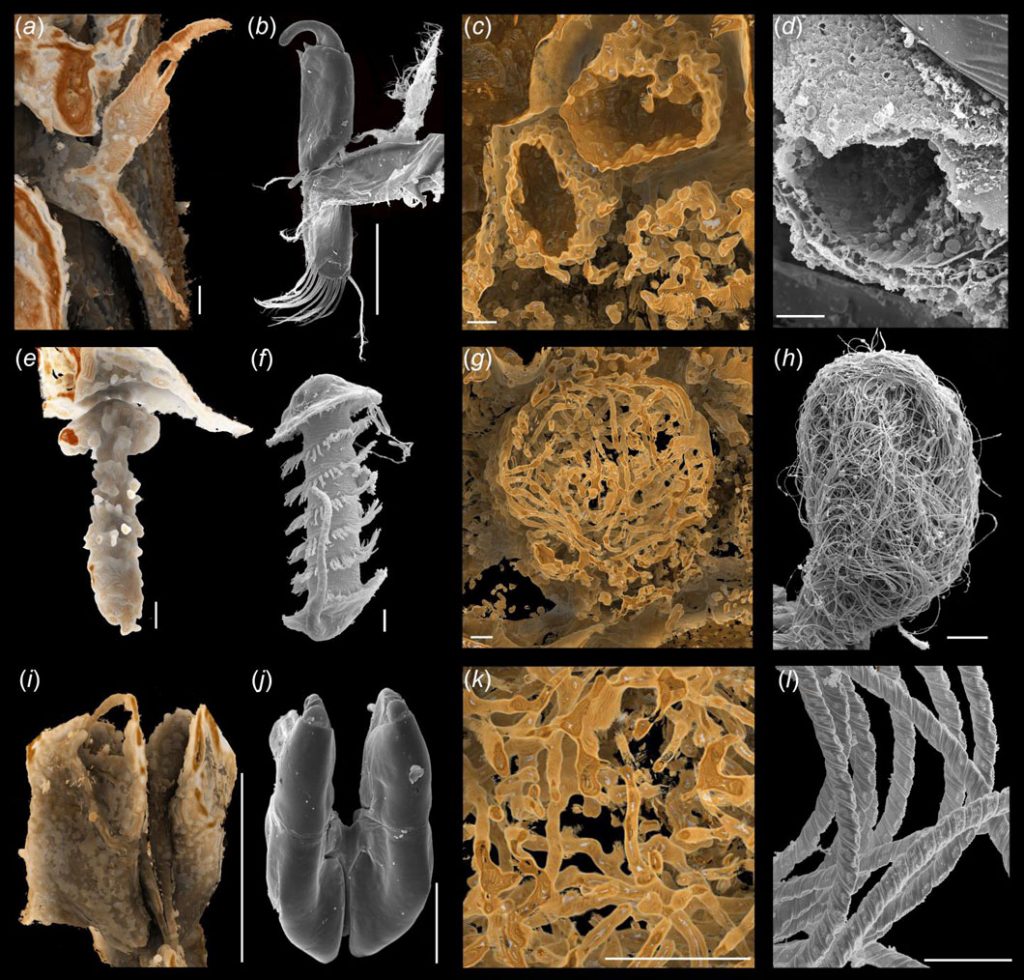Researchers just lately introduced the invention of the oldest fossilized sperm ever discovered. This was noticed inside a prehistoric crustacean, having been trapped in amber round 100 million years in the past.
A very well-preserved fossil
The ostracods are among the many commonest fossil stays ofOrdovician to the current day, a interval of greater than 480 million years. However, the presence of soppy tissue is extraordinarily uncommon and scientists normally solely observe calcified shells. As a part of this work offered within the assessment PNAS, a global group of paleontologists checked out a very well-preserved fossil of feminine ostracod, which might probably have turn into trapped in amber shortly after mating.

Belonging to a brand new prehistoric species known as Myanmarcypris hui, the crustacean in query would have lived within the coastal and inland waters of what’s at present the Myanmar, framed by timber producing huge portions of resin. Researchers estimated that the fossilized sperm found contained in the animal have been 100 million years previous, making them the oldest ever to be discovered. The earlier report involved a gamete present in a fossilized cocoon in Antarctic, previous of ” solely “50 million years in the past.
Led by the Dr Renate Matzke-Karasz, geobiologist on the Ludwig-Maximilians-Universitaet at Munich, the analysis group analyzed 39 ostracods trapped in a tiny piece of amber utilizing computer-assisted microtomography (microCT), an imaging method for producing high-resolution 3D photographs, just lately used for ” unpack »Egyptian animal mummies.

“Our work reveals that the usage of large sperm is a really viable reproductive technique”
The large sperm cells recognized by the researchers have been saved in a pair of seminal receptacles of one of many feminine ostracods, ready for the eggs to mature. While most animals produce giant quantities of tiny sperm to extend the probabilities of fertilization, some, like fruit flies and fashionable ostracods, produce a small variety of outsized sperm, usually with longer tails than the animal itself. .
According to the researchers, in these species, bigger sperm would improve the probabilities of fertilization. Therefore, this current discovery constitutes ” an historic and superior instance of evolutionary specialization “. ” Our work reveals that the usage of large sperm is a really viable reproductive technique that has been round for a really very long time on Earth. Previously, it was believed that animals adopting this sample sooner or later of their evolution have been doomed to vanish in a short time.t “, underlines Matzke-Karasz.
” This certainly represents an enormous value for the animals. Large sperm have to be produced, the reproductive organs are additionally bigger, and mating lasts a very long time. So a number of organic power allotted to replica », Adds the researcher. ” So you may assume that it would not make sense from an evolutionary standpoint, however in ostracods it appears to have been working for over 100 million years.. “

